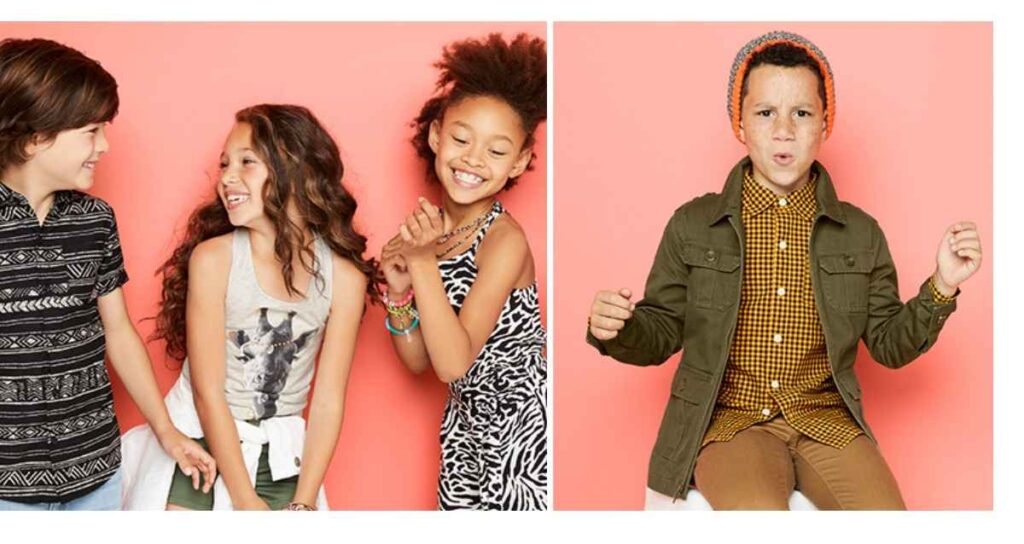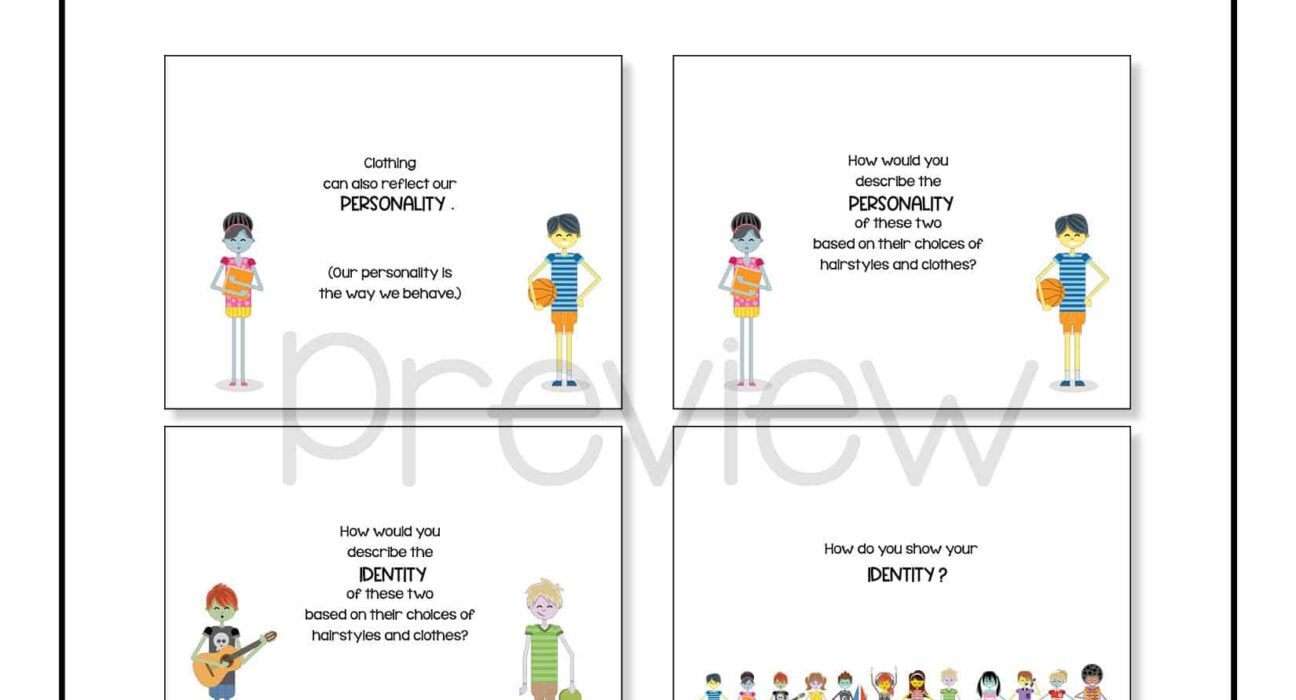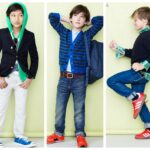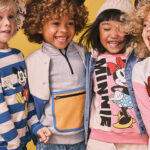Yes, kids’ fashion choices often reflect their personality traits. Their clothing can reveal interests, moods, and individuality.
Children express themselves through fashion from a young age. As they explore their preferences, their clothing choices may showcase their creativity, confidence, and social influences. For instance, a child who prefers bright colors and bold patterns might be outgoing and adventurous.
Conversely, a preference for muted tones could indicate a more reserved personality. Parents and caregivers play a crucial role in this process, as they can help guide and encourage kids to explore their style. Understanding these choices offers insights into a child’s development, helping adults support their self-expression and individuality in a positive way.
Table of Contents
Introduction To Kids Fashion And Personality
Kids fashion is not just about trends. It reflects their unique personalities. Children express who they are through their clothing choices. Understanding this link helps parents guide their kids better.
The Link Between Attire And Self-expression
Clothes serve as a canvas for children’s feelings. Each outfit tells a story. Here are some ways kids express themselves through fashion:
- Color Choices: Bright colors often show happiness.
- Patterns: Stripes or polka dots can indicate playfulness.
- Styles: Casual styles may reflect a laid-back attitude.
Kids may choose superhero shirts to show bravery. Others may prefer dresses to express femininity. These choices provide insights into their inner worlds.
Research On Clothing Psychology In Children
Studies reveal fascinating facts about clothing psychology. Here are some key findings:
| Research Finding | Description |
|---|---|
| Self-Identity | Clothes help kids develop their self-image. |
| Social Interaction | Fashion choices influence friendships and group dynamics. |
| Emotional Well-Being | Wearing favorite outfits boosts confidence and mood. |
Children often feel more powerful in their chosen outfits. This feeling can enhance their social skills. Fashion plays a significant role in their development.
:max_bytes(150000):strip_icc()/Rational-choice-theory-3cf73bf57f814075b80b676573a072a6.jpg)
Credit: www.investopedia.com
Color Psychology In Kids’ Wardrobes
Kids express their feelings through what they wear. The colors they choose can reveal their personality traits. Understanding these color choices helps parents connect with their children better. Let’s explore how color impacts kids’ fashion choices.
Color Choices And Their Meanings
Different colors represent different feelings and traits. Here’s a simple table to understand their meanings:
| Color | Meaning |
|---|---|
| Red | Energy and excitement |
| Blue | Calm and trust |
| Yellow | Happiness and creativity |
| Green | Growth and balance |
| Purple | Imagination and spirituality |
| Black | Power and elegance |
| Pink | Compassion and playfulness |
Kids may choose colors based on how they feel. A child in bright colors might be cheerful and energetic. Darker shades may indicate a more serious mood.
Influence Of Color On Mood And Behavior
The colors in a child’s wardrobe can affect their mood. Here are some key points:
- Bright colors can boost happiness.
- Soft tones create a calming atmosphere.
- Vivid colors often inspire creativity.
- Dark colors may make kids feel serious or sad.
Research shows that colors can influence behavior. For example:
- Kids wearing yellow might feel more positive.
- Those in blue often feel peaceful.
- Choosing red can make them more energetic.
Understanding these color choices helps parents support their children’s emotional needs. Observing what colors kids prefer can lead to deeper conversations.
Fashion As A Form Of Communication
Fashion acts like a language for kids. Their clothing choices express who they are. Each outfit tells a story about their thoughts and feelings. Kids use fashion to show their interests and personalities. This section explores how children communicate through their style.
How Children Use Clothing To Convey Messages
Kids often choose outfits that reflect their moods. They might wear bright colors when happy. Darker tones can signal sadness or a desire to be alone. Here are some ways children use clothing to communicate:
- Colors: Bright colors can show excitement or joy.
- Logos: Favorite characters or brands can express interests.
- Styles: Casual or formal wear can indicate confidence or shyness.
Children also mix patterns and textures. This shows their creativity and uniqueness. Fashion choices can change daily, reflecting their evolving emotions.
The Role Of Fashion In Social Interactions
Fashion plays a big role in how kids interact with others. It helps them fit in or stand out among peers. Here are some key points about fashion in social settings:
| Fashion Role | Effect on Kids |
|---|---|
| Building Friendships | Similar styles can attract like-minded friends. |
| Creating Cliques | Distinct styles may form exclusive groups. |
| Boosting Confidence | Stylish outfits can enhance self-esteem. |
Kids notice each other’s clothing. They often comment on outfits. Positive remarks can strengthen friendships. Negative comments may hurt feelings. Fashion can shape social dynamics greatly.

Credit: www.instagram.com
Influence Of Media On Children’s Fashion
The media plays a big role in shaping children’s fashion choices. Kids often see styles on TV and the internet. These platforms influence what they like and wear. Fashion trends change quickly, and kids want to keep up. This section explores how media impacts their choices.
Impact Of Television And Internet
Television shows and online content show kids what to wear. Popular characters often sport trendy outfits. Kids admire these characters and want similar styles.
- Cartoons and shows introduce new styles.
- Online influencers showcase daily outfits.
- Kids can see fashion trends instantly.
Many kids follow fashion channels on platforms like YouTube. These channels offer tips and ideas. Kids feel connected to their favorite stars. They want to imitate their looks.
Celebrity Culture And Its Effects On Young Minds
Celebrity culture heavily influences children’s fashion. Celebrities often start trends that kids adore. Popular stars have the power to shape what is “cool.”
| Celebrity | Fashion Style | Effect on Kids |
|---|---|---|
| Billie Eilish | Baggy clothes and bright colors | Encourages individuality |
| Zendaya | Elegant and bold outfits | Promotes confidence |
| Justin Bieber | Streetwear and casual looks | Influences casual style |
Kids often want to dress like their favorite stars. This desire can lead to strong fashion statements. Celebrity endorsements also push brands that kids want to wear.
Fashion choices reflect children’s personalities. Media shapes these choices. Understanding this influence helps parents guide their kids in fashion.
Parental Influence Vs. Child’s Autonomy
Fashion choices for kids often reflect a mix of parental influence and the child’s personal style. Parents play a significant role in shaping their child’s wardrobe. Yet, as children grow, they crave independence. Understanding this balance is crucial for healthy development.
Negotiating Fashion Choices With Children
Parents can guide their children while respecting their preferences. Here are some tips for effective negotiation:
- Set Boundaries: Establish basic rules about what is acceptable.
- Encourage Dialogue: Ask children why they like certain outfits.
- Offer Choices: Present a few options that fit your guidelines.
Negotiating fashion can help develop decision-making skills. Children learn to express their opinions. This fosters confidence and self-esteem.
Supporting Individuality Through Clothing
Children’s fashion choices often reflect their unique personalities. Supporting their individuality is vital. Here’s how to encourage self-expression:
| Strategy | Description |
|---|---|
| Personalized Shopping | Involve children in the shopping process. |
| Creative Outfits | Allow mix-and-match clothing for unique styles. |
| Dress-Up Play | Encourage dress-up games to explore different looks. |
Supporting individuality helps children develop a strong identity. They learn to embrace their choices. This creates a sense of pride in their appearance.
The Role Of Peers In Fashion Choices
Kids often look to their friends for fashion inspiration. Peers play a big role in shaping their choices. This influence can reflect their personality traits. Understanding this dynamic helps us see how kids express themselves through style.
Peer Pressure And Conformity
Peer pressure affects kids’ fashion choices significantly. They may feel compelled to wear certain styles to fit in. This pressure can lead to:
- Buying trendy clothes.
- Choosing popular brands.
- Adopting similar hairstyles.
Conformity can sometimes stifle individuality. Kids may hide their true preferences. They might follow trends rather than express personal style. The desire to belong can overshadow self-expression.
The Desire To Fit In Versus Stand Out
Some kids want to fit in with their peers. They may wear what everyone else wears. Others prefer to stand out and showcase their uniqueness.
Here’s how kids navigate this tension:
- Following trends to be accepted.
- Wearing unique outfits to express individuality.
- Combining both approaches for balance.
Fashion choices reveal personality traits. Kids who fit in may value community. Those who stand out often embrace creativity. Understanding these motivations helps parents and educators support kids.
Developmental Stages And Fashion Preferences
Children’s fashion choices change as they grow. These choices reveal their developing personalities. Each stage of childhood brings unique preferences. Understanding these stages helps in recognizing their self-expression.
Fashion Sense During Different Childhood Phases
Fashion sense varies greatly in different childhood phases. Here are some key stages:
| Age Range | Fashion Preferences | Personality Traits |
|---|---|---|
| 0-2 Years | Comfort over style | Dependent, joyful |
| 3-5 Years | Bright colors, playful patterns | Imaginative, curious |
| 6-8 Years | Individual choices, favorite characters | Creative, assertive |
| 9-12 Years | Trendy, influenced by peers | Social, identity-seeking |
Evolving Tastes And Personality Reflection
Children’s tastes evolve as they mature. Early preferences focus on comfort. As they grow, they seek self-expression through clothing.
- 0-2 Years: Baby clothes prioritize comfort and ease.
- 3-5 Years: Bright colors reflect imagination and playfulness.
- 6-8 Years: Kids start to show preferences for characters.
- 9-12 Years: Trendy styles help kids fit in with peers.
Fashion choices mirror personality traits. Creative kids often choose unique styles. Social children prefer what their friends wear. Understanding these preferences helps parents support their child’s development.
Gender Expression And Clothing
Kids express their personalities through clothing. Fashion choices reflect their feelings and identities. Gender expression plays a big role in this. Children often choose outfits based on how they feel. Understanding these choices helps us support them better.
Gender Norms In Kids’ Fashion
Gender norms shape what kids wear. Society often expects boys and girls to dress differently.
- Boys may prefer:
- Blue colors
- Sports-themed clothes
- Rugged styles
- Girls may choose:
- Pink colors
- Floral patterns
- Dressy outfits
These norms can limit creativity. Kids may feel pressure to conform. Some may want to wear items from the opposite category.
Encouraging Gender-neutral Clothing Options
Gender-neutral clothing allows kids to express themselves freely. It breaks traditional barriers and promotes creativity.
| Benefits of Gender-Neutral Clothing | Examples |
|---|---|
| Fosters Self-Expression | Bright colors, unique patterns |
| Boosts Confidence | Comfortable fits, personal styles |
| Encourages Inclusivity | Neutral tones, unisex designs |
Parents can help by offering choices. Allow kids to pick their outfits. This encourages them to express their true selves.
Cultural Influences On Kids’ Fashion
Kids’ fashion choices are often shaped by their culture. Different cultures bring unique styles and traditions. These influences help kids express their identity. Understanding these influences can reveal much about their personality traits.
Ethnic Clothing And Identity
Ethnic clothing plays a big role in a child’s identity. It reflects their heritage and family background. Wearing traditional attire helps kids feel connected to their roots. Some common ethnic clothing includes:
- Sarongs in Southeast Asia
- Kimonos in Japan
- Dashikis in West Africa
- Lehengas in India
These outfits often carry stories and meanings. Kids may feel proud wearing their culture’s clothing. This pride can boost their self-esteem and confidence.
Cultural Celebrations And Traditional Attire
Cultural celebrations influence kids’ fashion choices. Festivals and holidays often require special outfits. Traditional attire worn during these events can be vibrant and eye-catching. Some popular celebrations include:
- Diwali: Bright colors and intricate designs.
- Chinese New Year: Red and gold clothing for good luck.
- Hanukkah: Family gatherings with festive attire.
- Thanksgiving: Cozy, family-themed outfits.
Wearing traditional attire during these occasions strengthens cultural ties. It helps kids feel part of something bigger. This connection can shape their personality traits, making them more confident and expressive.
Psychological Impact Of Fashion On Self-esteem
Fashion plays a big role in shaping children’s self-esteem. What kids wear can influence how they feel about themselves. Their clothing choices often reflect their inner thoughts and personality traits. This connection between fashion and confidence is crucial for kids as they grow.
Clothing Choices And Confidence
Kids express themselves through their clothing. Choosing certain outfits can boost their confidence. Here are some ways clothing choices affect confidence:
- Bright colors: Bright colors can uplift mood and energy.
- Comfortable fabrics: Comfort helps kids feel secure.
- Trendy styles: Wearing trendy clothes can make kids feel accepted.
- Personal expression: Unique styles reflect individuality and creativity.
Confidence often leads to better social interactions. Kids with high confidence tend to make friends easily. They participate more in activities and express their ideas freely.
The Effect Of Fashion On Children’s Self-perception
Fashion can shape how kids see themselves. Their self-perception affects their behavior and choices. Some key points include:
- Peer influence: Kids want to fit in with their friends.
- Media portrayal: TV shows and social media set trends.
- Family values: Family opinions can impact fashion choices.
Kids may feel pressure to dress a certain way. This pressure can lead to negative feelings if they don’t fit in. Parents can support their children by encouraging personal style. This helps kids build a positive self-image.
| Fashion Impact | Positive Outcome | Negative Outcome |
|---|---|---|
| Trendy clothes | Increased confidence | Pressure to conform |
| Comfortable outfits | Enhanced comfort | Overlooked style |
| Unique styles | Self-expression | Feeling different |
Understanding the impact of fashion helps parents guide their children. Encouraging kids to choose outfits they love builds confidence. This creates a positive cycle of self-esteem and personal growth.
Sustainability And Ethical Fashion
Kids’ fashion choices are changing. Many children now prefer sustainable and ethical clothing. This shift reflects their growing awareness of the planet and its needs. Parents play a vital role in guiding these choices.
Teaching Children About Sustainable Choices
Teaching kids about sustainable choices is essential. Here are some key points:
- Explain what sustainability means.
- Discuss the impact of fashion on the environment.
- Encourage them to choose eco-friendly brands.
- Show how to recycle old clothes.
- Involve them in shopping for sustainable options.
Simple lessons can create a lasting impact. Kids understand better when they see real examples. Take them to eco-friendly stores. Let them see the difference.
The Rise Of Eco-friendly Kids’ Clothing
Eco-friendly kids’ clothing is becoming popular. Here are some reasons why:
| Factor | Impact |
|---|---|
| Materials | Natural fibers reduce pollution. |
| Production | Ethical labor practices protect workers. |
| Durability | High-quality clothes last longer. |
| Design | Stylish options appeal to kids. |
Parents appreciate the benefits of eco-friendly clothing. It combines style with a positive impact. Kids enjoy expressing themselves while caring for the environment.
Fashion-forward Kids: Prodigies Or Pressure?
Kids today are more fashion-savvy than ever. They express their personalities through clothing. Some kids become mini fashion icons. This raises questions about creativity versus societal pressure.
Celebrating Young Fashion Icons
Many kids amaze us with their style. They mix colors, patterns, and trends. Here are some examples:
- Blue hair and bright sneakers
- Graphic tees with unique designs
- Layered outfits with bold accessories
These young trendsetters inspire others. Parents often share their looks on social media. This can lead to a cycle of admiration and expectation.
The Debate Over Age-appropriate Fashion
What is considered age-appropriate? Fashion choices can spark debates. Some argue kids should wear comfy clothes. Others believe self-expression is vital. Here are key points to consider:
| Pros of Kids’ Fashion Choices | Cons of Kids’ Fashion Choices |
|---|---|
| Boosts confidence | Can lead to bullying |
| Encourages creativity | May impose adult standards |
| Reflects individuality | Can create financial stress |
Finding a balance is crucial. Parents can help guide choices. Encouragement and support build confidence. Let kids explore their style while staying true to themselves.
Conclusion: Embracing Individuality In Fashion
Children’s fashion choices often reveal their unique personality traits. Each outfit tells a story about who they are. Understanding this connection helps parents encourage their kids’ self-expression through clothing.
Summarizing The Connection Between Fashion And Personality
Fashion choices can indicate various personality traits. Here’s a quick summary:
| Fashion Style | Personality Trait |
|---|---|
| Bright colors | Outgoing and energetic |
| Classic styles | Timeless and thoughtful |
| Trendy outfits | Adventurous and social |
| Casual wear | Laid-back and easy-going |
Recognizing these patterns helps children feel understood. It allows them to be who they are without fear. Fashion becomes a fun way to show their true selves.
Encouraging Self-expression Through Clothing
Parents can support their kids’ fashion choices. Here are some tips:
- Let kids pick their outfits.
- Encourage mixing and matching styles.
- Discuss fashion ideas openly.
- Celebrate their unique choices.
Self-expression through clothing builds confidence. Kids learn to embrace their individuality. This journey shapes their character and helps them thrive.

Credit: www.pinterest.com
Frequently Asked Questions
Do Kids Express Themselves Through Fashion Choices?
Yes, kids often use clothing to showcase their personalities and preferences, reflecting their individuality and creativity.
How Does Fashion Influence Children’s Self-esteem?
Fashion can significantly boost children’s self-esteem by allowing them to feel confident and express their unique identities.
What Role Does Peer Pressure Play In Kids’ Fashion?
Peer pressure can heavily influence kids’ fashion choices, prompting them to conform to trends to fit in with friends.
Can Fashion Choices Indicate A Child’s Personality Type?
Yes, specific clothing styles can reveal traits like creativity, confidence, or introversion, providing insights into a child’s personality. “`
Conclusion
Kids’ fashion choices offer a fascinating glimpse into their personalities. Bright colors may indicate playfulness, while darker hues might reflect a more serious nature. Encouraging kids to express themselves through their clothing can boost their confidence. Understanding these choices helps parents support their children’s individuality and emotional growth.







